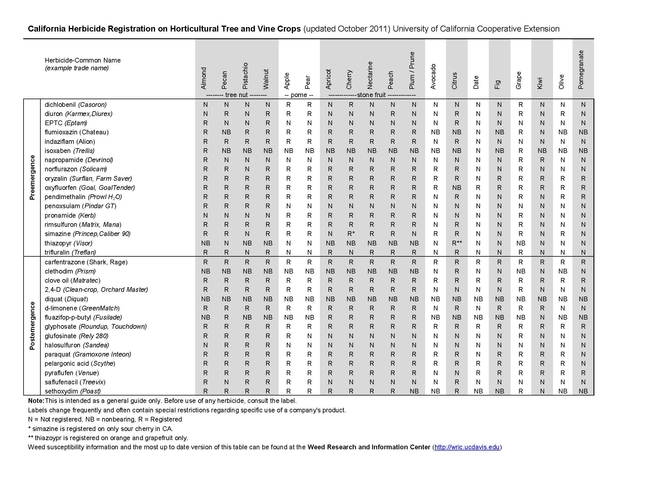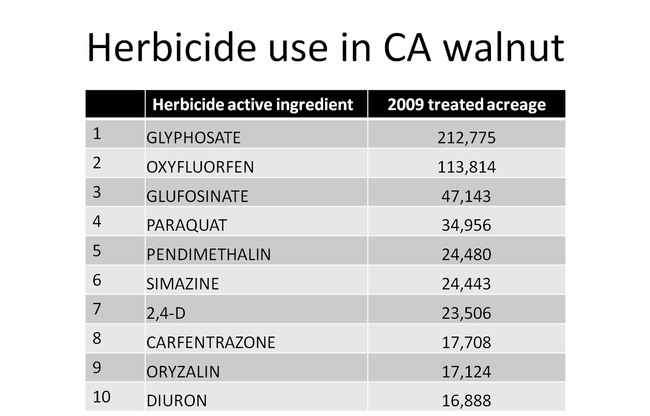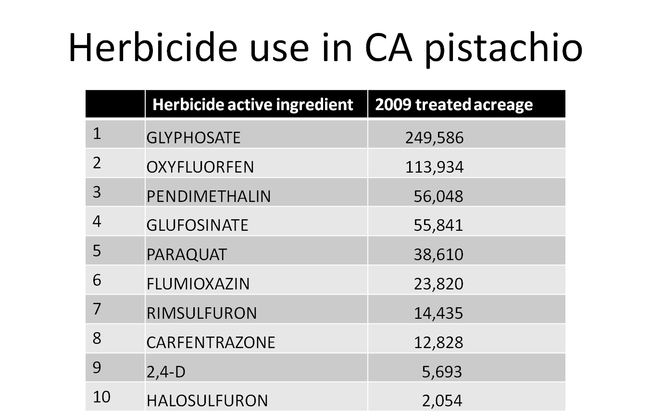We recently updated the Herbicide Registration chart for California tree and vine crops. Since I've done this two years in a row, I think this is officially a trend and can be called an "annual update"!
The updated version of the T&V herbicide chart is attached at the bottom of this post and is also available at this link: http://wric.ucdavis.edu/PDFs/herbicide_registration_on_horticultural_tree_and_vine_%20crops_2011_10.pdf to the UC Weed Research and Information Center.
On another note, I've been thinking a lot about how we use weed control chemicals and the effects that has on weed populations and resistance. Herbicide use depends on what's available (as in the chart above) but it also depends on a lot of other things including spectrum of activity, cost, environmental issues, regulatory issues, grower preference and comfort, among others. Increasingly, this is driven by herbicide resistance in tree and vine crops.
We know that resistance (and also shifts to tolerant species) is driven primarily by selection pressure - relying too much on one herbicide or one mode of action, or one control strategy. As we think about the selection pressure we are imposing and how to minimize it, I think it is useful to look at how we use various herbicides in orchard and vineyard systems. I put together the following charts showing the top ten herbicide active ingredients used in California tree nuts (from DPR pesticide us reports for 2009). It pretty obviously shows a tremendous reliance on a relatively few active ingredients and raises the question about future problems with resistance with some of these modes of action.
Food for thought...
Brad



Attached Files: